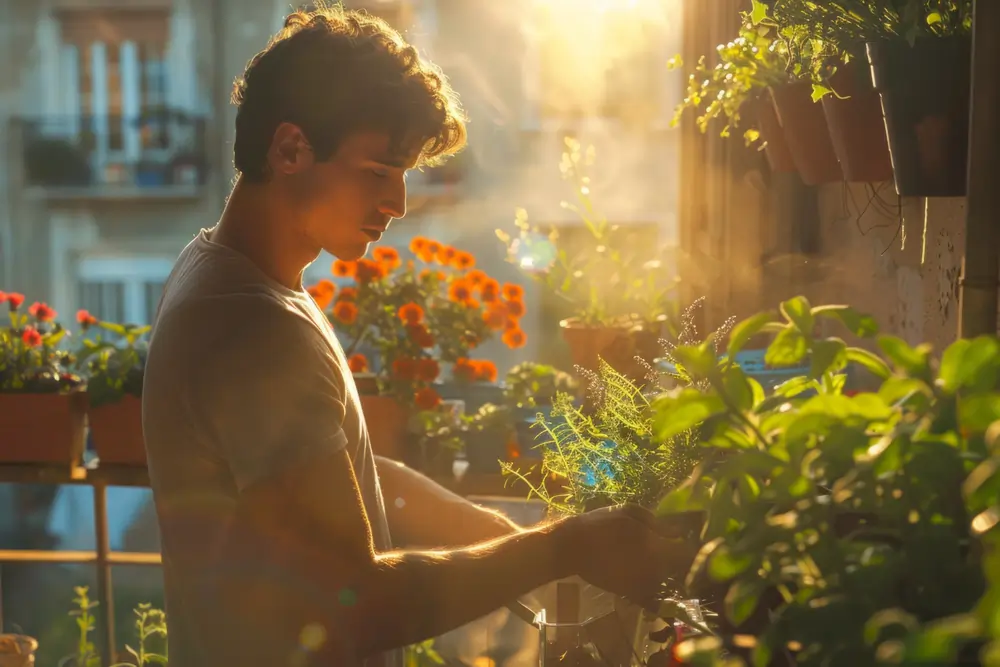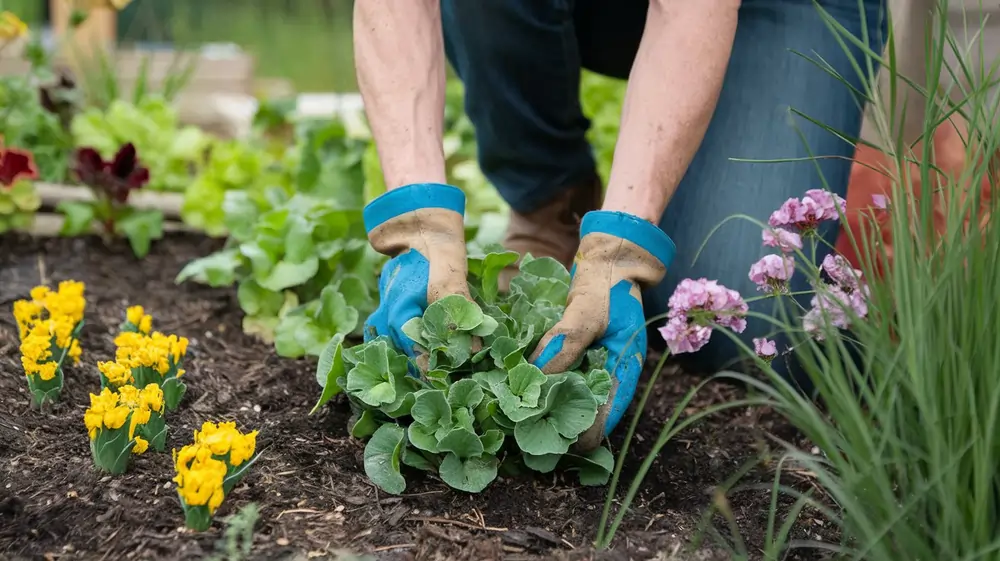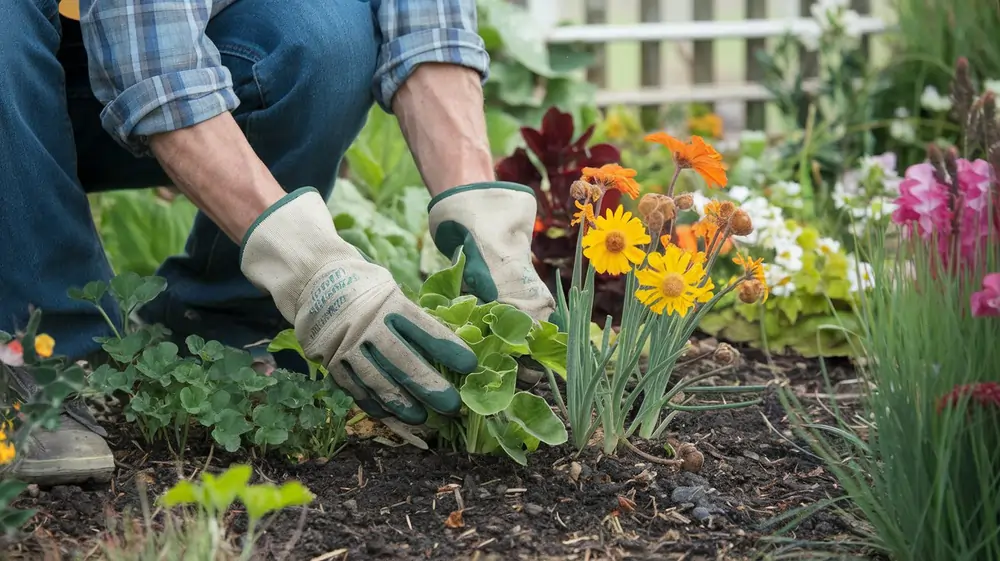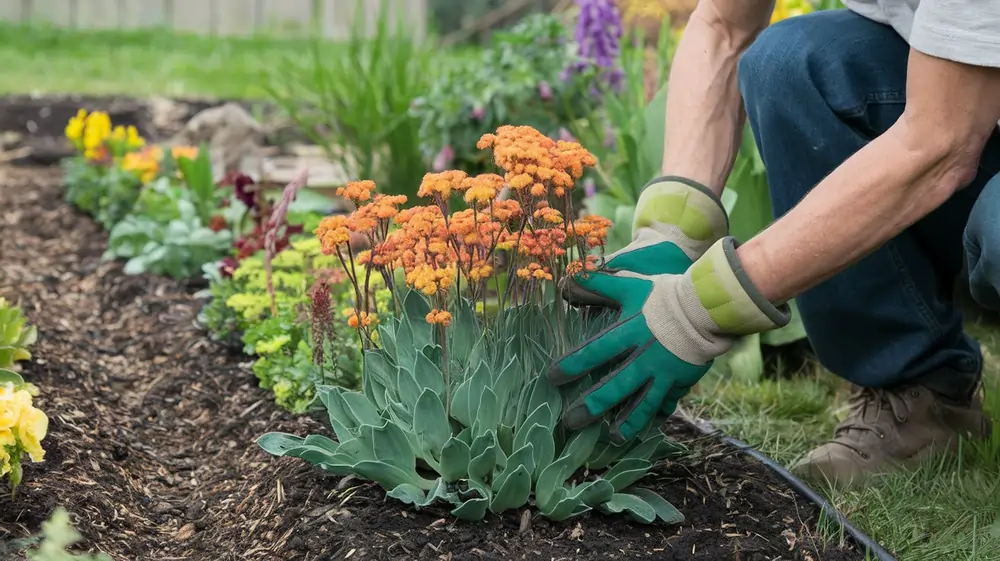In today’s world, sustainable gardening has become more crucial than ever. As we face environmental challenges, home gardeners are discovering that learning to garden sustainably isn’t just about maintaining a garden – it’s about creating a positive impact on the world around us. This comprehensive guide will explore how you can transform your outdoor space while practicing environmental stewardship.
Sustainable Gardening
Sustainable gardening isn’t just a trend; it’s a necessity in today’s eco-conscious world. Did you know that traditional gardening practices account for over 30% of global water usage? That’s a staggering statistic! But here’s the good news: you can create a lush, thriving garden while minimizing your environmental footprint.
In this guide, I’ll walk you through sustainable gardening techniques that not only save resources but also create a biodiverse haven in your own backyard. Whether you’re a beginner or a seasoned green thumb, there’s something here for everyone who wants to garden with the planet in mind. Let’s dig in!
What is sustainable gardening and why should I care?

Understanding the principles of sustainable gardening
Sustainable gardening focuses on creating an environmentally friendly approach to growing plants that minimizes resource consumption while maximizing benefits to the environment. By reducing our reliance on items purchased and embracing natural cycles, we can create gardens that thrive with fewer chemicals and require less maintenance.
How sustainable gardening benefits the environment
One of the primary benefits is enhanced biodiversity, which supports native wildlife and creates resilient ecosystems. Through proper stormwater management and soil and plants care, sustainable gardens help prevent erosion and improve water quality. These gardens also contribute to reducing air pollution and provide essential habitat for pollinator species.
The role of sustainability in modern garden design
Modern sustainable garden design incorporates garden space efficiently, utilizing garden beds and flower beds thoughtfully. Deciduous trees and ornamental grasses play crucial roles in creating dynamic, low-maintenance landscapes that adapt to local environmental conditions.
How can I start creating a sustainable garden at home?

Choosing the right plants for your sustainable garden
Start by selecting best plants that are suited to your region. Visit your local nursery to find perennial and bulb options that require less water and fertilizer. Avoid invasive plants that can harm local ecosystems.
Implementing water conservation techniques
Managing much water usage is crucial. Install rain barrels or a cistern to collect rainfall for irrigation. Non-potable water can be used effectively for garden maintenance, reducing reliance on treated water supplies.
Composting and organic fertilizers: The keys to healthy soil
Create a compost pile to recycle kitchen and garden waste, providing natural nourishment for your plants. Improving soil health through the addition of organic matter is fundamental to sustainable gardening. Regular soil testing helps optimize fertilization practices.
What are the best eco-friendly pest management strategies?

Natural pest control methods for sustainable gardens
Plant growth can be protected without harmful chemicals. Strategic placement of companion plants and maintaining healthy soil and plants naturally deters many pests. Using a simple broom to remove pests manually is often more effective than chemical solutions.
Attracting beneficial insects to your garden
Creating habitats that attract beneficial insects is essential for natural pest control. By including specific shrub varieties and flowering plants, you can encourage natural predators that help control pest populations while also helping with pollination.
Alternatives to chemical pesticides
Instead of relying on synthetic pesticides, sustainable gardens use integrated pest management. This includes horticultural practices like crop rotation and physical barriers, reducing the need for chemical interventions.
How can I conserve water while maintaining a beautiful garden?

Efficient irrigation systems for sustainable gardens
Smart irrigation systems help manage runoff and reduce water waste. Proper placement of pots in your garden can create microclimates that retain moisture, while mulch helps conserve water by reducing evaporation.
Drought-tolerant plants that require less water
Selecting plants adapted to local conditions is crucial. Ornamental species that naturally require less water can create beautiful landscapes while conserving resources. Plants also provide shade, further reducing water needs.
Collecting and reusing rainwater in your garden
Installing systems to capture stormwater not only provides free irrigation but also helps manage water resources responsibly. Rain barrels and other collection systems make recycling water simple and effective.
What role do native plants play in sustainable gardening?

Benefits of incorporating native plants in your garden
Native plants are adapted to local conditions and typically require minimal maintenance. They support local ecosystems while helping you make your garden more resilient and sustainable.
How native plants support local ecosystems
Native species are essential for maintaining local food webs and supporting biodiversity. They provide natural habitats and food sources for local wildlife, creating a balanced ecosystem.
Finding the best native plants for your region
Work with local experts to identify appropriate native species. Consider factors like soil type, light conditions, and climate when selecting plants.
How can I make my lawn more sustainable?
Eco-friendly alternatives to traditional lawns
Replace traditional turf with diverse plantings that don’t use excessive resources. Consider alternatives like meadowscapes or groundcovers that require less maintenance.
Sustainable lawn care practices
Avoid gas-powered equipment like traditional lawn mowers and blowers when possible. Manual tools can be just as effective and provide exercise while reducing emissions.
Reducing the environmental impact of lawn maintenance
Minimize chemical inputs and embrace natural maintenance methods. Proper mowing height and natural fertilization techniques can maintain a healthy lawn with minimal environmental impact.
What sustainable gardening practices can help combat climate change?
Carbon sequestration through sustainable gardening
Healthy soils and diverse plantings help sequester carbon. By maintaining organic matter levels and minimizing soil disturbance, gardens can become effective carbon sinks.
Reducing your garden’s carbon footprint
Choose hand tools over power equipment when possible. Embrace stewardship practices that minimize resource consumption while maximizing benefits to the environment.
Creating wildlife habitats in your sustainable garden
Design your garden to support local wildlife populations. Include water sources, shelter, and food plants to create a thriving ecosystem that contributes to local biodiversity.
Conclusion
Sustainable gardening is more than a way to grow plants—it’s a lifestyle that aligns with caring for our planet. By adopting these eco-friendly practices, you’ll not only create a thriving, beautiful garden but also contribute to a healthier ecosystem.
Ready to start your journey toward a greener garden? Share your tips and experiences in the comments below. Let’s inspire each other to grow sustainably!
Remember that sustainable gardening is a journey, not a destination. Start with small changes and gradually incorporate more sustainable practices as you learn and grow. Your garden will evolve into a thriving ecosystem that benefits both you and the environment while requiring less maintenance and fewer resources over time.

Comments are closed.